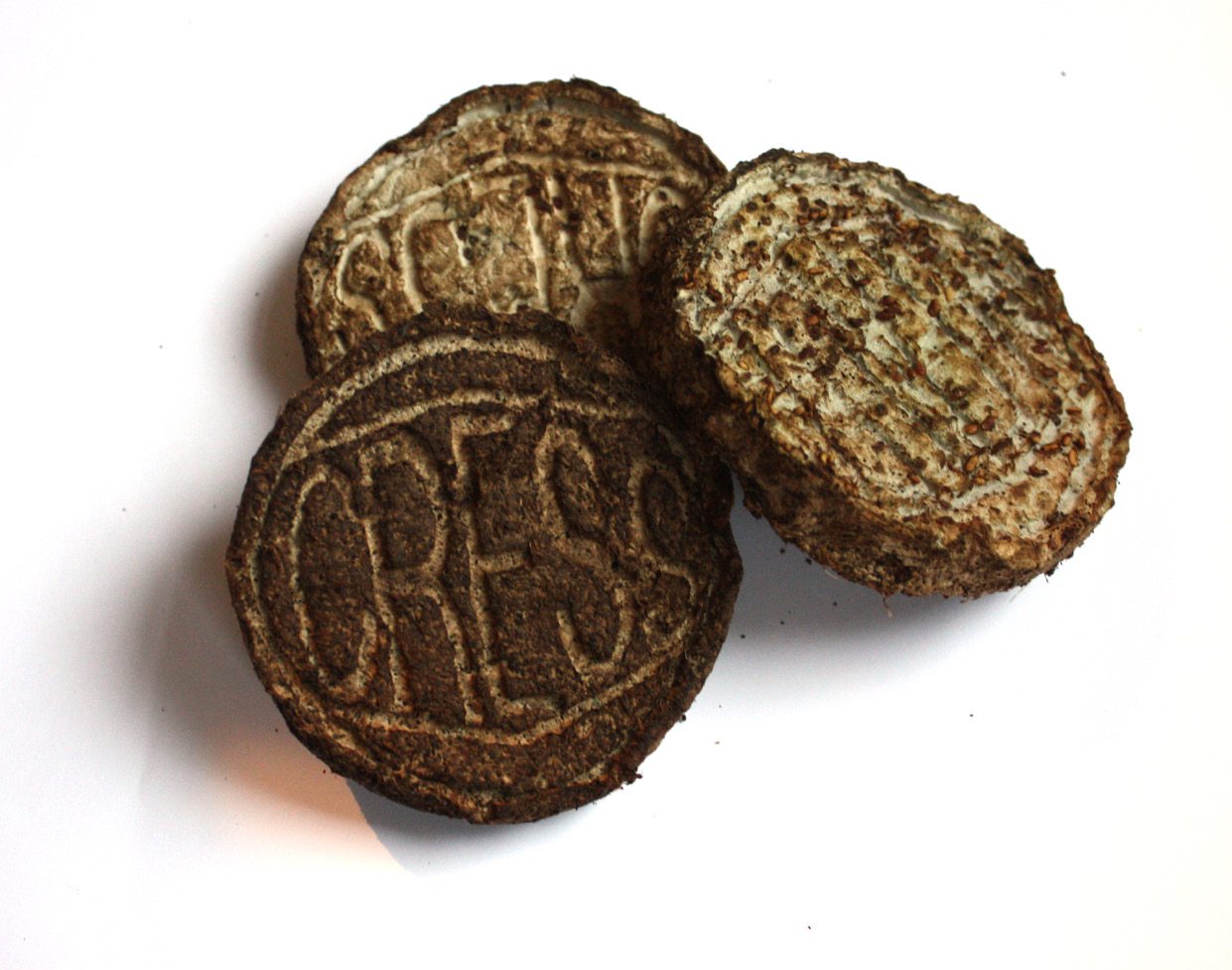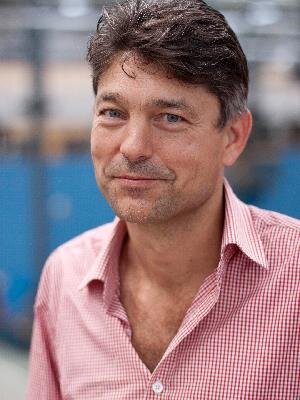Characterisation of waste coffee grounds as a design material
The design of Cof2Grow is the result of a thesis of material driven design. The topic of the research was to characterise waste coffee grounds as a design material. Boundaries and opportunities in the field of bio-composites were explored and the material experience for waste coffee materials was mapped out.
D4S, wabi sabi and standard unique were the pillars for the research. Materials were designed to match the vision for this thesis. Two of them are applied in Cof2Grow. Cof2Grow is a gardening kit to grow portioned greens at home. It consists of a pot (made from CapPurcino) and tablets (made from Café Maché).

Café Maché
This composite uses paper pulp as a matrix. The wetness of the coffee waste determines the darkness of the brown coffee colour. Enhancing the material with fibres will also add more intense colours and exciting patterns. In the tablet, this material is used for packaging and to bond the coffee and seeds. The coffee waste has nutrients that stimulate growth of the greens.
CapPurcino
A bio-based polyurethane is the matrix of this material. Depending on the mould, the material suface can be shiny and smooth or rough. In time, the material will mature because of poor UV resistance. The pot is made from this material. The shine will wear off in time and together with the changes in colour due to UV create stronger aesthetics and bonds in time.
Goals of the project
The goal of the project was to let people feel desired by the material and captivate them in the course of material bonding. ViP was used to create a vision and future context for the material design. The new context of 2015 includes themes that relate to the waste coffee based-bio-composites domain, such as ‘loose ends connect’, ‘visual deception’, ‘material driven design’, ‘embrace imperfection’, ‘dynamic bonding’, ‘wake up and smell the coffee’ and ‘subconscious misbehaviour’.
Tempting exposure
To fulfil this vision in material design, the interaction has to be a ‘tempting exposure’. It was found that the material has to be modest and provocative in order to evoke this interaction. A meaning of material model (MoM) was developed for each meaning. Modest and provocative materials have qualities that can be contradicting and others that can enhance each other. New materials based on waste coffee grounds will not be designed for their technical properties, but rather for their sensorial properties.


Kaspar Jansen
- +31 (0) 152786905
- k.m.b.jansen@tudelft.nl
-
Room B-3-170
Graduate student
- Anouk Zeeuw van der Laan
Researchers
- Dr. Elvin Karana
- Dr. Valentina Rognoli
- Adam Fairweather
